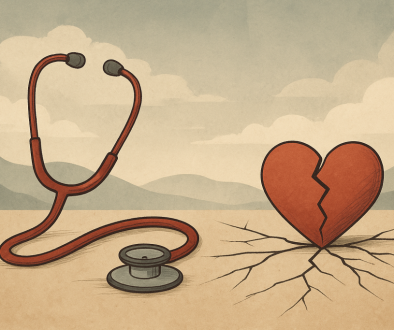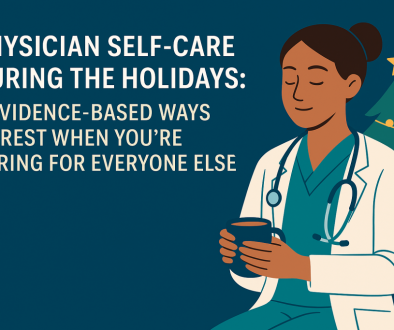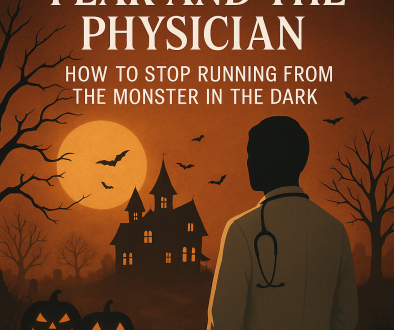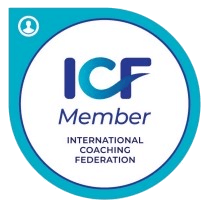Exploring Nonclinical Physician Careers: Opportunities and Insights
As a physician who has experienced burnout firsthand, I know how hard it can be to find a way out. When I found myself at a crossroads, unsure whether to become a nonclinical physician or find a way to modify my current role, I started an unexpected journey of self-discovery and exploration. Through interviews for various nonclinical positions in medical writing and utilization management, I ultimately realized that these paths were not the right fit for me. Instead, I chose to stay in clinical practice but decreased my FTE to create more margin in my life and achieve a better work-life balance.
Along the way, I learned two valuable lessons: the importance of aligning your values with your next career move and the vast array of opportunities available for physicians to utilize their medical expertise beyond the clinical setting. In this blog post, I will introduce some of the more common nonclinical positions physicians can consider, drawing from my own experiences and insights.
As a physician, you’ve dedicated years to honing your clinical skills and caring for patients. However, you may find yourself seeking new challenges or a change of pace. Have you considered a nonclinical career? There are several options if you are looking to shake things up. The first option is taking on an administrative or leadership role and decreasing your clinical time. The second is moving to part time or contract work like locums tenens. The third is leaving clinical work for a nonclinical career. Nonclinical careers offer exciting opportunities to leverage your medical expertise in diverse fields. Let’s explore some options and the steps needed to transition into each nonclinical role.
Reasons for Seeking Nonclinical Physician Roles:
Many physicians consider non-clinical careers due to burnout, desire for work-life balance, interest in broader healthcare issues, or simply to explore new challenges. Some may feel that full-time clinical practice isn’t the best fit for their long-term goals or personal circumstances. The jump from clinical work to a nonclinical career is a big one. It does not matter why you are seeking a change- make sure you weight the pros and cons closely!
Nonclinical Physician Career Options
Pharmaceutical Industry:
- Roles in drug development, clinical research, or medical affairs can be rewarding for physicians.
- Qualifications: Clinical experience is valuable, but additional training in clinical research or pharmacology may be beneficial.
- Transition Steps: Start by networking with industry professionals, attending pharmaceutical conferences, and considering part-time consulting roles to gain experience.
- Upsides: Potentially higher salaries, opportunity to impact healthcare on a larger scale.
- Downsides: Less direct patient interaction, potential ethical concerns about industry influence.
- Resources: SEAK, Inc. (www.seak.com) Offers training and resources for physicians transitioning to non-clinical careers, including an annual Non-Clinical Careers Conference.
Health Insurance and Utilization Management:
- Physicians can play crucial roles in policy development and resource allocation.
- Qualifications: Clinical experience is essential, but knowledge of healthcare economics and policy is also valuable.
- Transition Steps: Look for part-time reviewer positions to start, and consider pursuing additional education in health administration or policy.
- Upsides: Regular work hours, opportunity to influence healthcare delivery systems.
- Downsides: May involve difficult decisions about resource allocation, less hands-on patient care.
- Resources: Utilization Review Accreditation Commission (URAC) (www.urac.org) Offers training and certification in utilization management. National Committee for Quality Assurance (NCQA) (www.ncqa.org) Provides education and certification in healthcare quality management.
Medical Writing and Education:
- This field allows physicians to share their knowledge through various media.
- Qualifications: Strong writing skills, ability to explain complex medical concepts clearly.
- Transition Steps: Start by contributing to medical blogs or journals, and consimedical writing or journalism courses.
- Upsides: Flexible work arrangements and the opportunity to educate a broad audience.
- Downsides: Potentially lower income, especially when starting out.
- Resources: American Medical Writers Association (www.amwa.org) Offers training, networking, and certification in medical writing for healthcare professionals
Healthcare Technology and Informatics:
- Physicians can contribute to developing and implementing healthcare IT solutions.
- Qualifications: Interest in technology, may require additional training in informatics or computer science.
- Transition Steps: Seek opportunities to work on IT projects within your current organization, consider pursuing a degree or certification in health informatics. Epic and other EMR organizations offer in person and virtual training and certifications
- Upsides: Cutting-edge field with high growth potential, opportunity to shape the future of healthcare delivery.
- Downsides: Rapid technological changes require continuous learning, may involve less direct patient interaction.
- Resources: https://amia.org/education-events/health-informatics-essentials
Healthcare Administration:
- Physicians can take on leadership roles in hospitals or healthcare organizations.
- Qualifications: Leadership skills, may require an MBA or MHA degree.
- Transition Steps: Look for opportunities to take on administrative responsibilities in your current role, and consider pursuing relevant education in healthcare management.
- Upsides: Ability to influence healthcare delivery on a systemic level, potentially higher salaries.
- Downsides: High-stress environment, may involve difficult decisions affecting staff and patients.
- Resources: American Association for Physician Leadership (www.physicianleaders.org) Provides leadership training, certifications, and resources for physicians interested in management roles.
General Tips for a Nonclinical Career:
- Start by exploring options part-time while maintaining your clinical practice
- Network with professionals in your area of interest.
- Be prepared for potential income fluctuations during the transition.
- Consider additional education or certifications relevant to your chosen field.
- Be patient – career transitions often take time and persistence.
Remember, your medical training and clinical experience are valuable assets in many fields. While transitioning to a nonclinical career may seem like a lot, it can also be an exciting opportunity for growth and change. Take time to explore your options, assess your interests and skills, and don’t be afraid to take calculated risks in pursuit of a satisfying career path and balance.
As I reflect on my own journey and the insights I’ve gained along the way, I cannot stress enough the importance of identifying your “why” before making a big change. Whether you’re considering a transition to a nonclinical role or seeking ways to modify your current clinical practice, aligning your values with your next move is crucial. Take the time to understand what truly matters to you and explore your options. That way, you can make informed decisions that lead to greater professional fulfillment and personal well-being.
Remember, there is no one-size-fits-all approach to navigating a career transition. What worked for me may not be the best path for you. However, by staying open to possibilities, seeking guidance from mentors and coaches, and embracing the power of self-discovery, you can chart a course towards a more satisfying and sustainable career in medicine.
Whether you choose to remain in clinical practice or venture into the world of nonclinical roles, know that your skills, expertise, and dedication to improving lives are invaluable assets that can be applied in countless ways. So, take heart, stay curious, and never stop exploring the many paths available to you!





